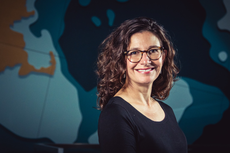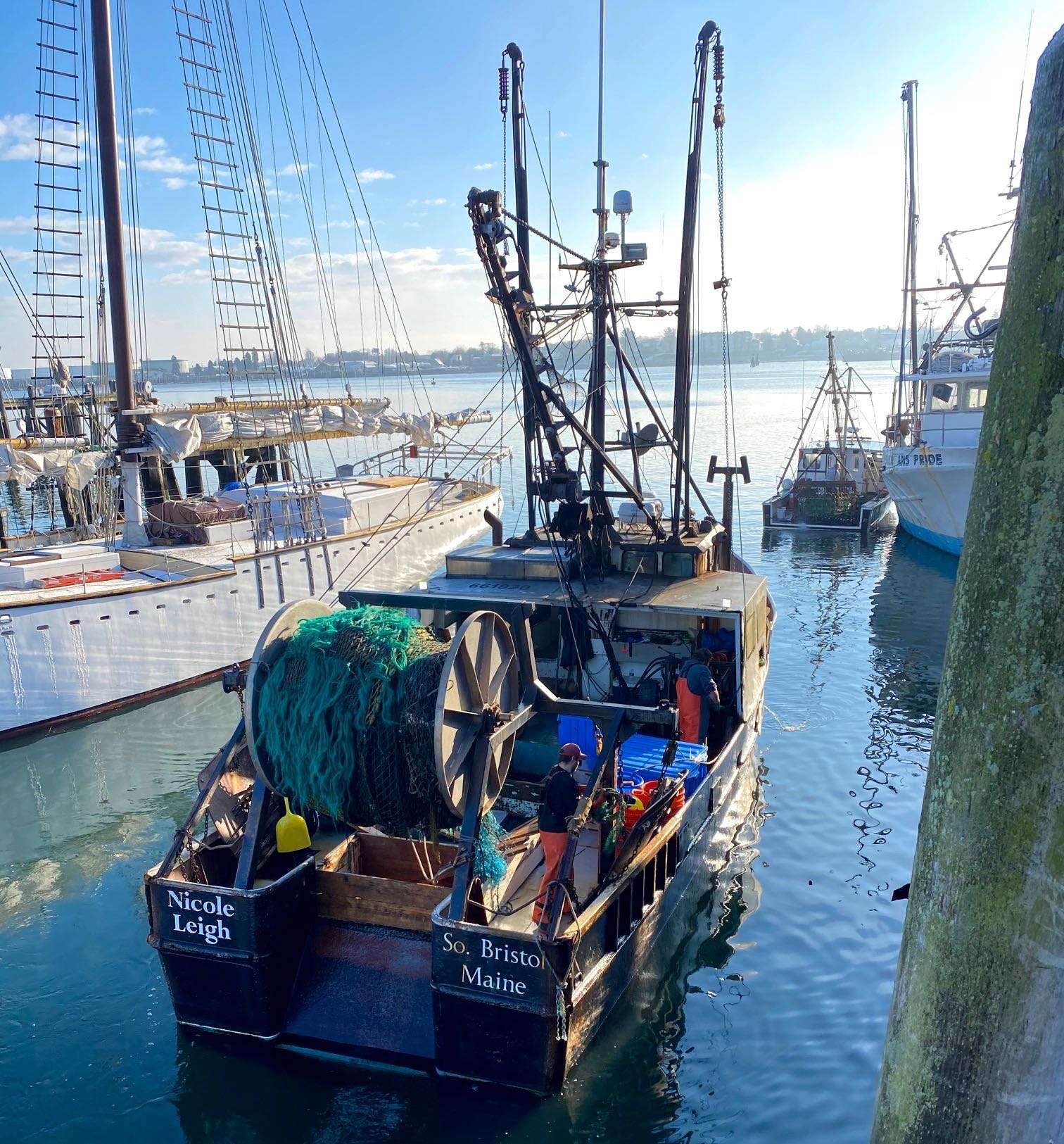
Q&A: CEO of Portland seafood startup is out to show Maine can produce premium fish
Gulf of Maine Sashimi in Portland is the first company launched by the Gulf of Maine Research Institute’s business development group, Gulf of Maine Ventures.
Funded by a mix of contributions from individual donors, the wholesale distributor launched in June 2019 to create a market solution to the persistent problem of low prices and diminished landings for locally harvested Gulf of Maine fish. By training harvesters in specialized handling practices, the company has created a market for the high-quality, sashimi-grade, sustainable fish.
The company has since grown to cover a range of wild and farmed species. The number of harvesters has grown to more than two dozen, most from Maine.
Gulf of Maine Sashimi recently issued a $1 million convertible note to support its growth over the coming 12 to 18 months and is currently speaking with a number of interested investors.
Mainebiz asked the company’s president and CEO, Jen Levin, about the company’s growth over the past year and where it’s headed. Here’s an edited transcript:
Mainebiz: What was behind the inception of this company?
Jen Levin: I worked at the Gulf of Maine Research Institute for a little over 10 years, managing the sustainable seafood program. A big part of our work was to see what we could do to make our region’s fisheries more competitive in a global setting. We observed that, over the last three decades, prices to fishermen have been going down. We’re harvesting a fraction of our sustainable fish quotas. We import 91% of the seafood we consume. Over half of that comes from massive-volume farms. That’s not a bad thing: They’re well managed. But Maine can’t compete with the volume.
Even in the wild-capture fisheries, like Icelandic haddock – which is most of the haddock you find sold here – the volumes that [overseas fishermen] harvest are four times what we could harvest.
MB: What does the conventional Maine groundfish fishery look like?
JL: In 2019, we harvested just 16.5% of what we could have harvested. It’s a vicious cycle – we’re not landing the volumes, so major distributors and retailers find themselves dependent on imported product, and the supply chain caters to larger fisheries and farms.

So we find ourselves in a downward spiral. Local fishermen go fishing, get paid little for their catch, and lose money. Fishermen we work with say, ‘I can’t afford to go fishing because the chances of making money is low.’
At GMRI, I looked at competing not on volume, but on quality. I looked at predominantly groundfish, like cod, haddock, pollock, hake, monkfish, the flounders, redfish – species that are harvested together and managed by the federal government. I observed that the highest-quality, most expensive fish come from outside the U.S. and get astronomical prices.
One example – our local mackerel fishery is considered to be a bait fishery, and fishermen get paid an average of 21 cents per pound locally. Meanwhile, we’ve got local chefs importing whole, frozen mackerel from Japan and paying $23 per pound. So we know there’s a market.
MB: What was the next step?
JL: While I was still at GMRI, we brought experts from outside the region and outside the country to train fishermen on handling processes aboard their boat that would accomplish a high-quality product.
Meanwhile, I also talked with chefs and distributors who wanted domestically produced, sashimi-grade fish. They just couldn’t find it. You can go to high-end restaurants across the country and find domestically produced scallops, lobster, mussels and oysters. But you don’t see finfish on those menus. That has everything to do with how the fish are handled.
MB: What do conventional handling practices look like?
JL: Often, fishermen put the fish in the hold and the fish slowly suffocate and die. They’re stressed out during that process. Stress produces natural chemicals that get into the meat and break it down more quickly.
MB: What do the best-handling practices look like?
JL: It’s modeled after the Japanese practice ikejime, which means ‘to kill with purpose.’
The fish are killed with a brain spike, which renders it brain-dead and eliminates stress. But the heart is still pumping. The fishermen then cut the fish at the gill and tail so they bleed out. After it’s bled, it goes into a salt-water ice slurry, where it cools quickly. Between the reduction of the stress-inducing chemicals and bleeding it out, the fish has a better texture and better taste, and lasts a lot longer because it doesn’t break down as quickly.
MB: Did operations take off right away?

JL: We’ve been working with fishermen for years. We talked with them before launching the company to understand whether they were interested in supplying fish and what the pricing structure would need to be to make it worth their while. Despite that preparation, it wasn’t easy to actually get fish. We’re talking about a major cultural shift in a very old industry.
My colleague Brendan [Landry, head of sourcing and sales] went out on the boats and talked about how to implement handling measures in a way that was feasible for their operations. It was difficult the first several months. Plus, these boats have prior relationships with traditional buyers.
MB: Has that changed?
JL: Now we’ve got a really wonderful cohort of fishermen we work with, from Downeast Maine to Gloucester, Mass. They see we’re here for the long haul. And we’re working to recruit more. We’ve purchased from 27 harvesters; 23 are in Maine.
MB: Your initial marketing focus was on selling whole fish to local chefs and high-end restaurants throughout New England, and through premium distribution channels serving the New York and Philadelphia areas. How did you get that rolling?
JL: That was the other challenge. A lot of the folks we sell to hadn’t even looked to New England for fish. I had some folks who said, ‘Grade A fish doesn’t come from New England, period.’ The challenge was showing them we could produce top-quality fish.
MB: How did you do that?

JL: Pre-COVID, we visited lots of restaurants and distributors and worked hard to get our story out there. Social media has been important. If we get one chef and he tags our post, that’s very helpful. Quality is critical, but the story is just as important; people love ‘local’ and are looking at the community and coastal economic impact of what we’re doing. We want to have a successful business, but in service to fishermen and in a way that’s sensitive to the ocean and to sustainability. That’s important to chefs and home cooks. We’ve got a loyal following now.
MB: How much fish are you selling?
JL: When we started, a couple of hundred pounds. But it’s a chicken-egg thing. We were building the market and our reputation. We couldn’t bring in too much to start because we didn’t yet have a place to send it.
Now, we bring in a few thousand pounds of fish each week. We do a broad diversity of wild and farmed products now – bluefin tuna, squid, mackerel, scallops, whiting, mussels, oysters. We’re selling directly to restaurants and distributors as far as Las Vegas, Chicago, Texas, New York and Washington, D.C.
MB: Were you impacted by the pandemic?
JL: In mid-March, we lost 100% of our customers. We knew the trickle-down to our boats would be dramatic. So we made a commitment to continue to show up however we could, which meant selling direct to home cooks.
MB: How did you pivot?
JL: We turned from selling whole fish to hiring fish cutters to fillet the fish and set up our website capacity. It was a time when people were concerned about access to food. We helped people hook up with high-quality local protein. The message spread quickly. Sales and volume went up. We never went below our February numbers.
MB: How much are you paying fishermen?
JL: We guarantee at least a 20% premium over auction and have paid 20% to 400% premiums depending on species and time of year. We also have price floors for different species.
MB: What’s next?
JL: One thing I’m particularly excited about is the work we’re doing with young fishermen who aspire to go groundfishing but haven’t felt they could get the prices they need to support that business. Now they’re working with us.














0 Comments